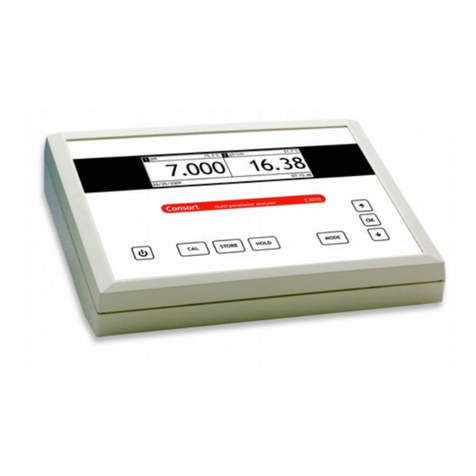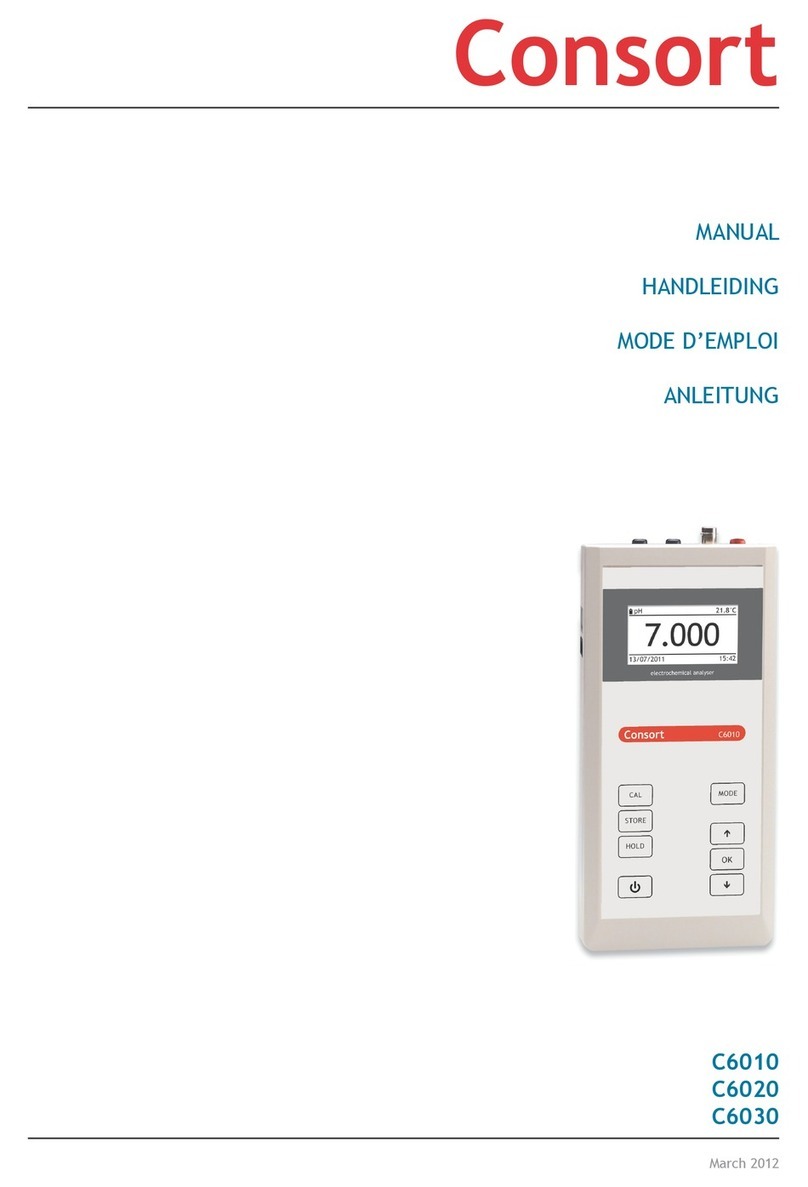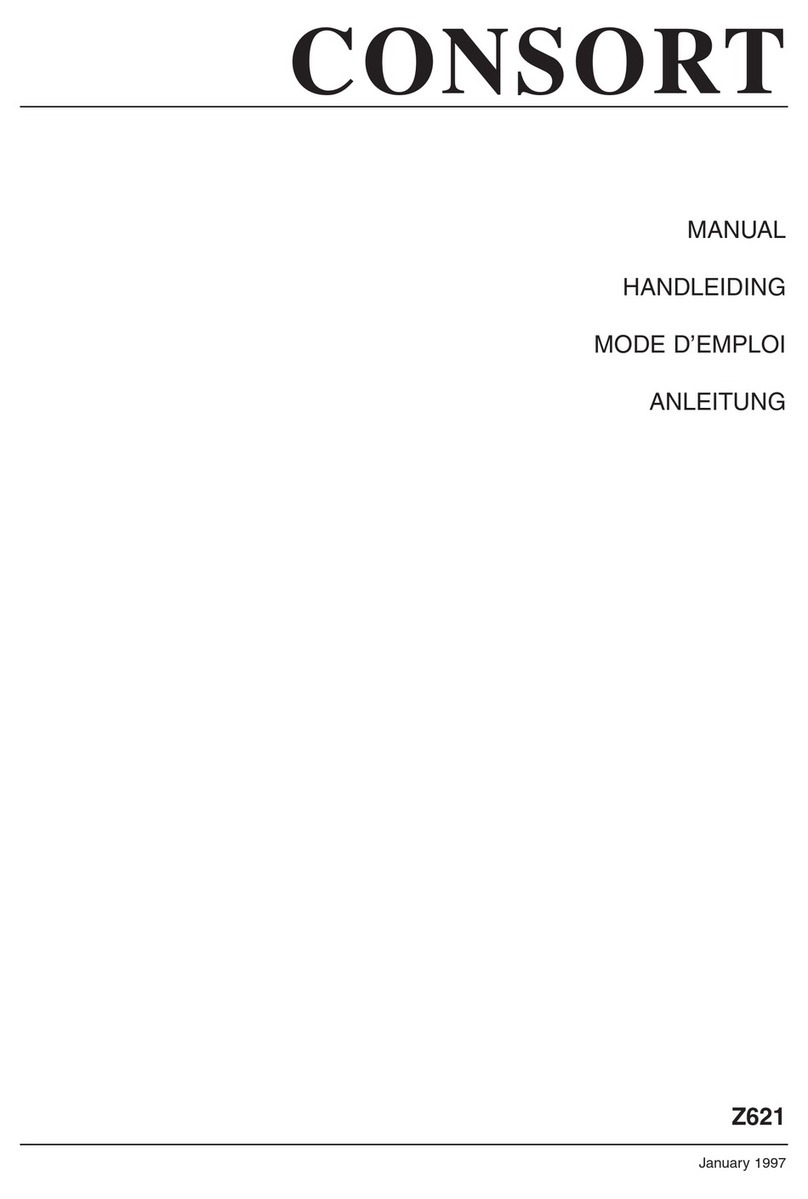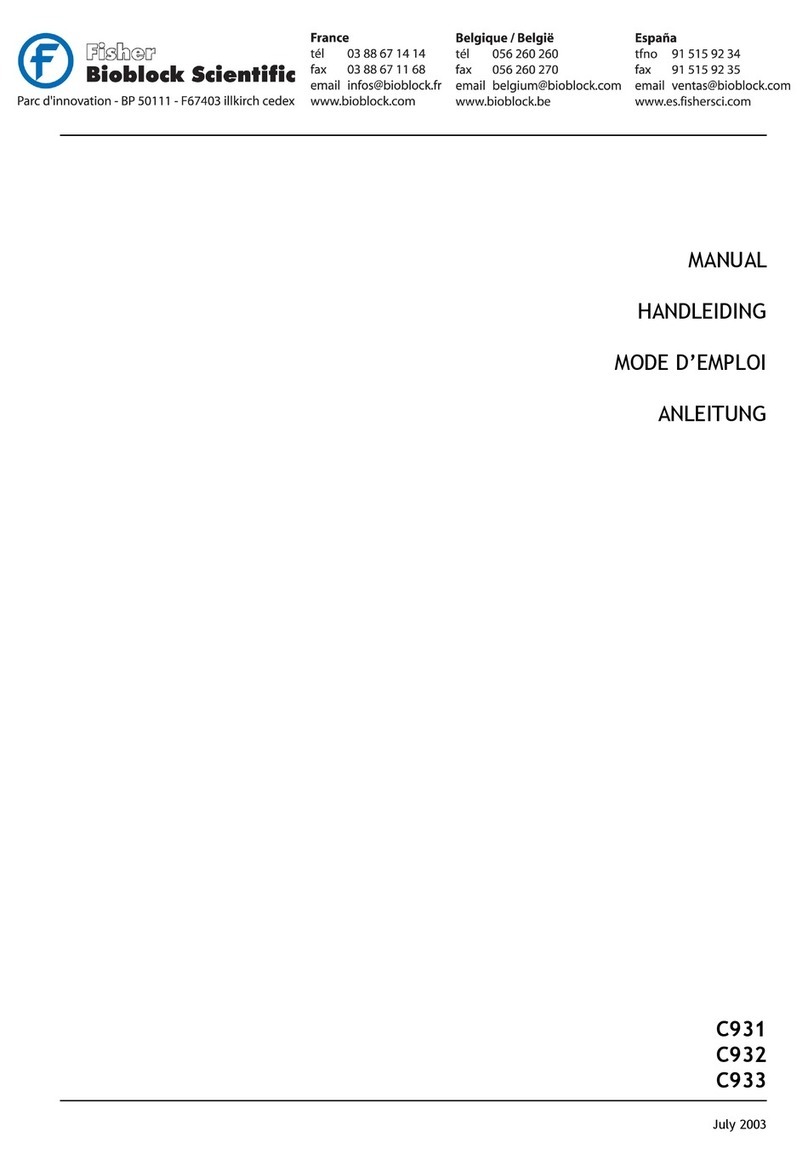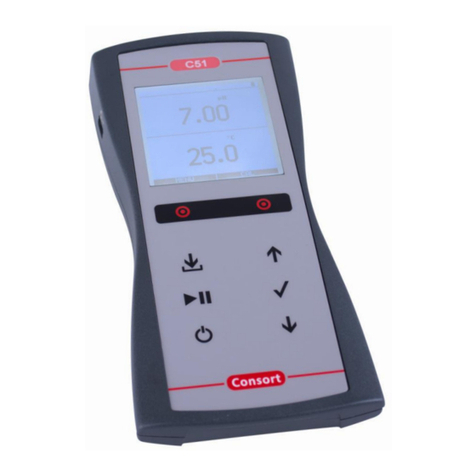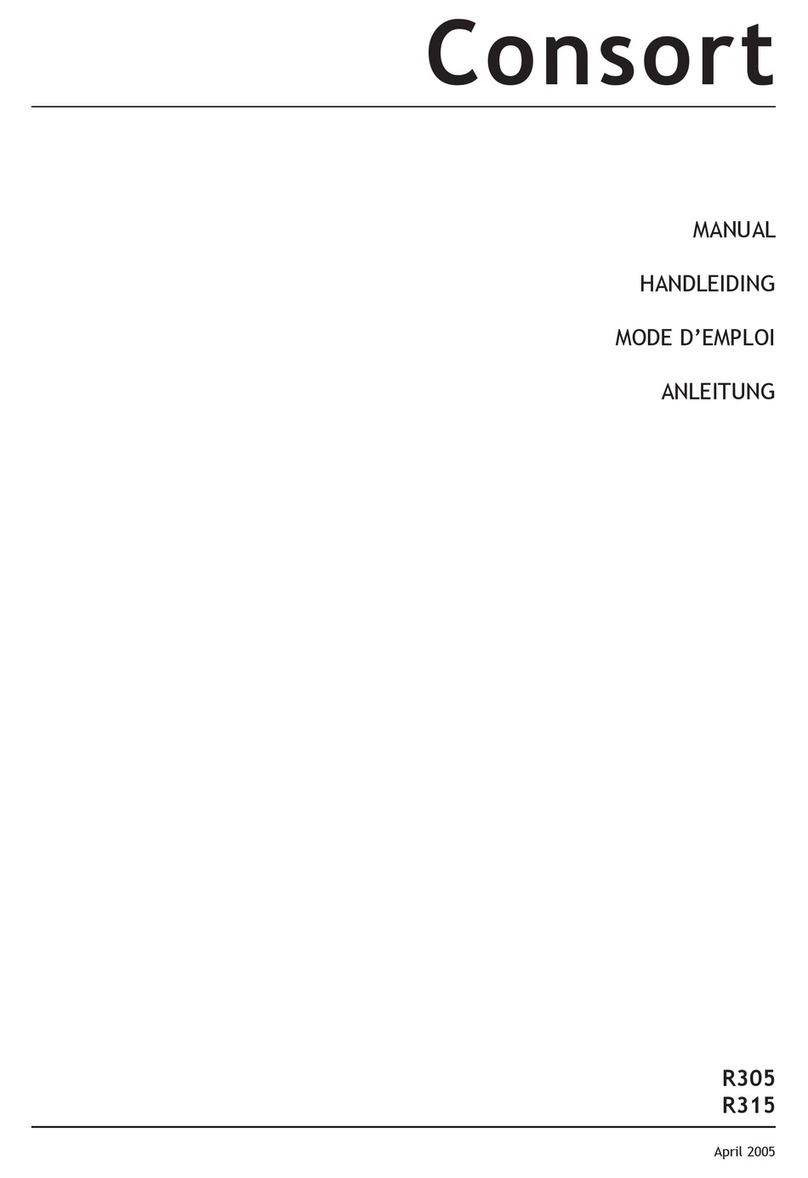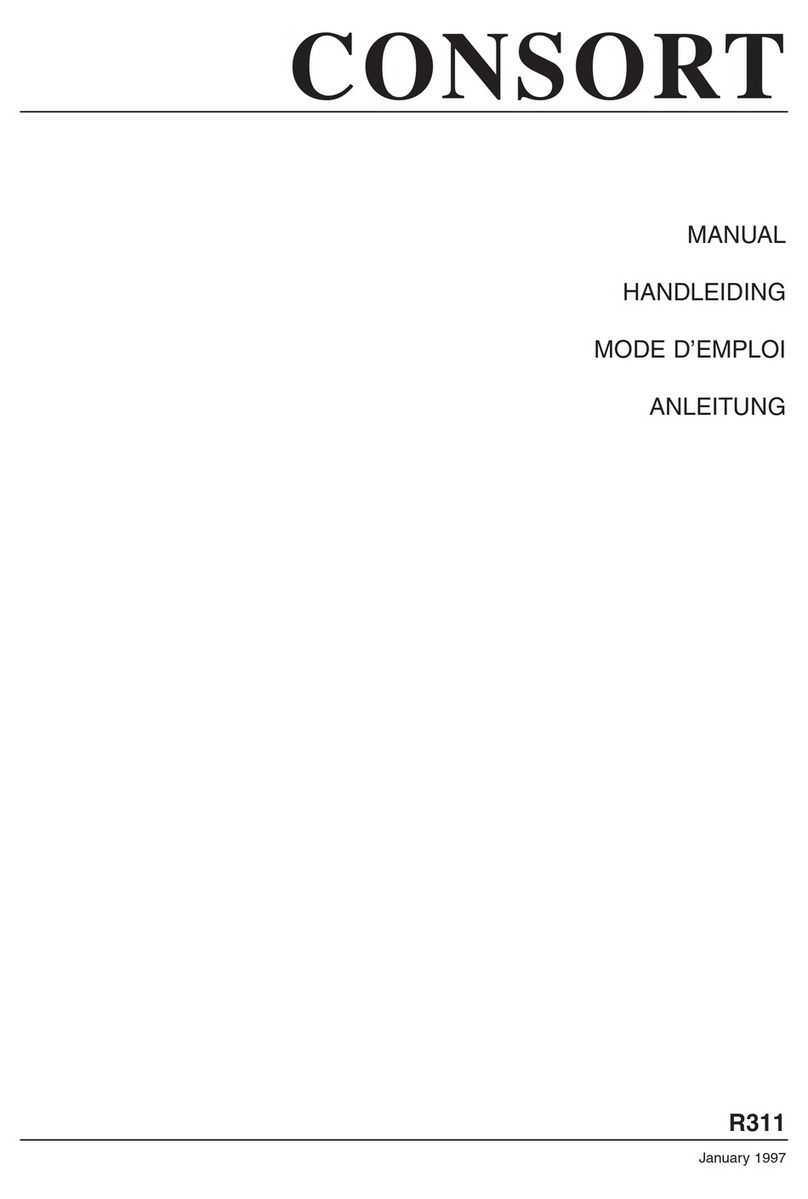
R735 • www.consort.be 4 / 36
Specifications - Tables - Forms
Specifications................................................................................................................. 33
Buffers, standards ........................................................................................................... 34
Technical assistance form - pH ............................................................................................ 35
Technical assistance form - Conductivity ................................................................................ 36
Your satisfaction ............................................................................................................. 37
Table of contents
Introduction ...................................... 5
Manufacturer ..................................... 5
Warranty .......................................... 5
Servicing........................................... 5
Keybord............................................ 5
Error codes........................................ 6
Inputs .............................................. 6
Recorder output.................................. 6
Digital output..................................... 6
Date................................................ 7
Time................................................ 7
Temperature...................................... 7
Recorder........................................... 7
Channels........................................... 7
Relays .............................................. 8
Alarm .............................................. 8
Specific features ................................. 8
mV measurement ................................ 8
pH measurement................................. 9
Conductivity measurement..................... 9
Maintenance ...................................... 10
Data-logging .......................................11
Inhoudsopgave
IInleiding .......................................... 12
Fabrikant .......................................... 12
Waarborg .......................................... 12
Onderhoud ........................................ 12
Toetsenbord....................................... 12
Foutmeldingen ................................... 13
Ingangen........................................... 13
Schrijveruitgang.................................. 13
Digitale uitgang .................................. 13
Datum.............................................. 14
Tijd................................................. 14
Temperatuur...................................... 14
Schrijver........................................... 14
Kanalen............................................ 14
Relais .............................................. 15
Alarm .............................................. 15
Specifieke voorzieningen ....................... 15
mV-meting .........................................15
pH-meting......................................... 16
Geleidbaarheidsmeting ......................... 16
Onderhoud ........................................ 17
Gegevensverwerking .............................18
Table de matières
Préface ............................................ 19
Fabricant .......................................... 19
Garantie ........................................... 19
Service............................................. 19
Clavier ............................................. 19
Code d'erreur ..................................... 20
Branchement ..................................... 20
Sortie enregistreur .............................. 20
Sortie numérique ................................ 20
Date................................................ 21
Temps.............................................. 21
Température...................................... 21
Enregistreur....................................... 21
Canaux............................................. 21
Relais .............................................. 22
Alarmes............................................ 22
Applications spécifiques ........................ 22
Mesure de mV .................................... 22
Mesure de pH..................................... 23
Mesure de conductivité ......................... 23
Entretien .......................................... 24
Transfer de données............................. 25
Inhaltsverzeichnis
Einführung ........................................ 26
Hersteller ......................................... 26
Garantie ........................................... 26
Service............................................. 26
Bedienungsfeld ................................... 26
Fehlermeldungen ................................ 27
Eingänge........................................... 27
Schreiberausgang ................................ 27
Digitalausgang .................................... 27
Datum.............................................. 28
Zeit................................................. 28
Temperatur ....................................... 28
Schreiber .......................................... 28
Kanäle ............................................. 28
Relais .............................................. 29
Alarme............................................. 29
Spezifische Einstellungen....................... 29
mV-Messung ........................................29
pH-Messung ....................................... 30
Leitfähigkeitsmessung........................... 30
Wartung ........................................... 31
Datenverarbeitung................................32


